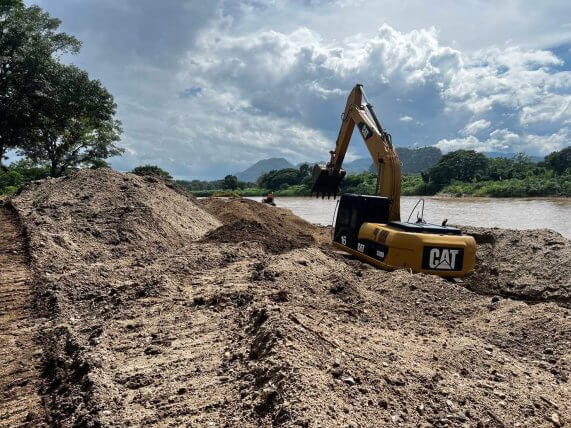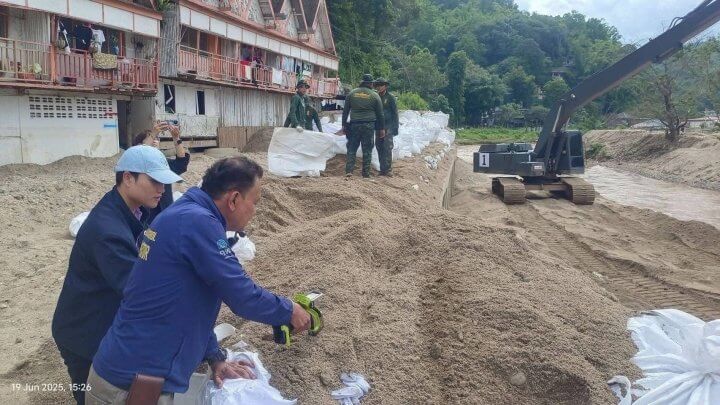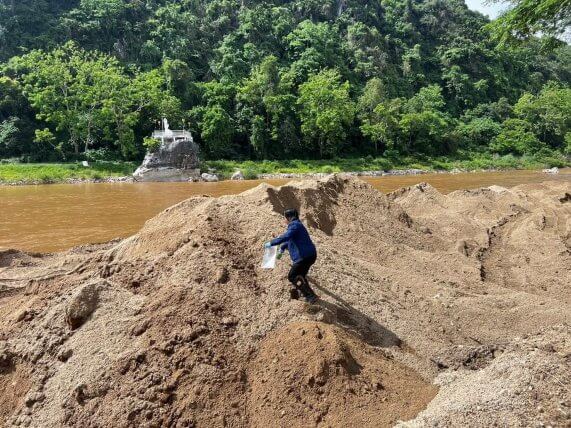
As the Marine Department, the Royal Irrigation Department, Army Development Command, Royal Thai Armed Forces Headquarters, Army Engineer Unit of Royal Thai Army, 3rd Army Area, and Chiang Rai Province are currently undertaking dredging operations in the Kok, Sai, and Ruak Rivers to prepare for the flood season and prevent flooding and landslides, concerns have arisen among academics and the public regarding the potential spread of arsenic contamination from dredged sediments deposited on land.
In response, the Pollution Control Department (PCD) has developed recommendations for the management of these sediments to prevent potential environmental and public health risks.
The recommendations are based on the detected arsenic concentrations in the sediments, and are categorized into four levels with corresponding management approaches as follows:
- Arsenic ≤ 6 mg/kg: the sediment can be used for all purposes without restrictions.
- Arsenic 7–25 mg/kg: the sediment may be used for all purposes, but it is advisable to avoid use for residential landfilling unless it is covered with cement or other materials of sufficient thickness to prevent direct human contact. For stockpiled in designated areas, measures should be taken to prevent leaching into rivers.
- Arsenic 26–500 mg/kg: the sediment is not suitable for general use unless it is covered with cement or other materials of sufficient thickness to prevent direct contact with residents. For disposal or stockpiling in designated areas, the soil pH should be adjusted to a neutral range (pH 6.0–7.0) using lime, biomass ash, or other alkaline materials to immobilize the arsenic. The site must be capped with clean soil and vegetated to prevent erosion, or alternatively, covered with a single layer of HDPE plastic sheeting.
- Arsenic > 500 mg/kg (classified as hazardous waste): the sediment is unsuitable for any beneficial use. For disposal or stockpiling in designated areas, the soil pH should be adjusted to a neutral range (pH 6.0–7.0) using lime, biomass ash, or other alkaline materials to immobilize the arsenic. The site must be capped with a double layer of HDPE plastic sheeting.
The recommendations were developed by PCD based on relevant standards, including:
- The Notification of the National Environment Board on the Determination of Soil Quality Standards B.E. 2564, Soil Quality for Residential Use (arsenic not exceeding 6 mg/kg) and Soil Quality for Commercial, Agricultural and Other Businesses (arsenic not exceeding 25 mg/kg)
- The Notification of the Ministry of Industry on the Management of Waste or Discarded Materials B.E. 2566, Appendix 2: Characteristics and Properties of Discarded Materials that are Hazardous Waste (Disused materials containing arsenic and/or arsenic compounds of 500 mg/kg (TTLC value exceeding 500 mg/kg)) classified as hazardous waste
PCD will forward these guidelines to relevant agencies for implementation in the management of dredged sediments.


